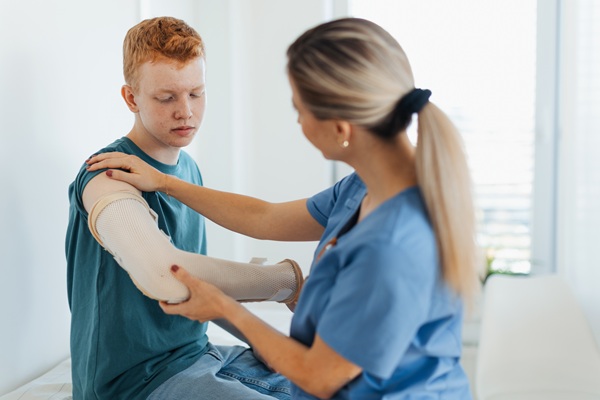How Adolescent Physical Therapy Supports Recovery and Development

Adolescence is a time of rapid growth, physical changes, and active lifestyles. For many young people, injuries or physical challenges can disrupt this stage of development. Adolescent physical therapy plays a key role in helping young individuals recover from injuries and challenges to improve their physical health.
Understanding adolescent physical therapy
Adolescent physical therapy focuses on the unique needs of teenagers and young adults experiencing physical challenges. This type of therapy addresses issues caused by sports injuries, accidents, growth-related changes, or chronic conditions to restore function, alleviate pain, and improve the overall quality of life for the patient.
Physical therapists working with adolescents understand this age group's physical, emotional, and developmental aspects. Therefore, the therapist tailors treatments to suit the unique needs of each individual so that therapy is both safe and effective for the teen's growth stage.
Benefits of adolescent physical therapy
Injury Recovery and Rehabilitation
Sports injuries are frequent among adolescents, especially those active in school or recreational sports. Whether it is a sprained ankle, torn ligament, or muscle strain, adolescent physical therapy helps speed recovery and lower the risk of further injury. A physical therapist will develop a customized rehabilitation program to strengthen the injured area and help the patient return safely to normal activities.
Improving Strength and Flexibility
The body undergoes rapid growth during these teenage years, which can lead to issues such as instability in the joints or muscle implants. Therefore, physical therapy focuses on improving strength, flexibility, and balance, helping to ensure that the body functions optimally during this time in life. Exercises and stretches are customized to the individual's needs to help them build a strong foundation for lifelong physical health.
Postural and Alignment Support
Poor posture can lead to discomfort, back pain, or other musculoskeletal issues as adolescents grow. However, physical therapy can help improve posture and alignment by teaching proper body mechanics. This is especially important for adolescents who spend long hours sitting at desks or performing activities that strain the back and neck.
Prevention of Future Injuries
One of the key benefits of adolescent physical therapy is injury prevention. A physical therapist will assess movement patterns, identify weaknesses, and provide exercises to correct those issues before they result in injury. By focusing on strengthening muscles and improving coordination, adolescents can lower their risk of developing chronic pain or injury as they continue to become more active and grow.
Improved mental health
Physical therapy can bolster the self-esteem and confidence of participating adolescents. Additionally, therapists help adolescents manage stress and anxiety related to physical setbacks. As they recover from an injury or develop physical skills, the sense of accomplishment they gain positively impacts their mental health. Also, learning about body mechanics and the importance of physical activity can instill healthy lifelong habits.
When to seek adolescent physical therapy
Parents should consider adolescent physical therapy if their child experiences persistent pain, difficulty with movement, or a noticeable decrease in physical performance. The value of early intervention can make a significant difference in preventing long-term complications and ensuring a quicker and more successful recovery. If your child is facing physical challenges, consider consulting a physical therapist to help them on their path to recovery and overall health.
Request an appointment here: https://ocptclinic.com or call Orange County Physical Therapy OCPT at (949) 299-0297 for an appointment in our Newport Beach office.
Check out what others are saying about our services on Yelp: Adolescent Physical Therapy in Newport Beach, CA.
Related Posts
Hip pain can be a debilitating condition that affects your daily activities and overall quality of life. Seeking hip pain treatment from a physical therapist when it first appears can prevent further complications and improve your health and well-being. Here are four main benefits of early hip pain treatment.Early hip pain treatment can prevent further…
Physical therapy can help with a range of different injuries. However, not every injury happens because of risky or strenuous activity. In fact, just doing normal things can cause injuries unintentionally. That does not mean you should avoid treating it. The good news is that physical therapy can help relieve your pain.It is possible to…
Carpal tunnel syndrome is a common condition that often requires the professional treatment of a physical therapist for rehabilitation and long-term relief. This condition causes numbness, tingling, and weakness in the hand and fingers as the median nerve travels through the carpal tunnel in the wrist. There are effective treatments available for people experiencing discomfort…
Anti-pain medication is typically the first course of action for pain management, but it is not the best option for all patients since pain medication comes with some risks like leading to chemical dependencies. People with chronic pain often have to seek alternative ways to manage their discomfort to avoid having to take painkillers for…
